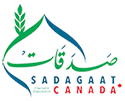WATER SECTOR
WATER IS LIFE
Water supply and environmental sanitation projects aim to provide clean water sources that are closer to the end-users in order to save effort, money, and time wasted to obtain water and upgrade health and social standards in the targeted areas.
Access to clean and safe drinking water remains crucial for the health of children and adults for their survival. The need for water continues in all parts of Sudan, where we find that the per capita water supply in some areas in a day is less than five liters (the standard in case of emergency is 15 liters per person per day). In response to the current situation in Sudan, Sadagaat Charity Organization has been working effectively to improve and solve the water issues with the purpose of enhancing the health status of the local community while paying more attention to the sustainability process through water committees in all areas where the watering projects were implemented. Water Sector Projects Goals: Providing a safe and clean water source for the citizens in regions in the different states of Sudan. Work to raise the level of health, social and economic awareness of the residents of the targeted areas through the availability of safe drinking water. Contributing to developing the targeted areas through the availability of safe drinking water. Embodying the principle of community participation in the development and management of drinking water sources. Accomplishing the goal of everyone fairly having access to safe and clean water. Rehabilitation and treatment of water resources, making the most of sustainable sources (The Nile). Contribute to the educational process and enhance the health of students in schools by providing and constructing water coolers in schools within the state of Khartoum. Seek to link some stations with the national network. Work to assist the residents within the planned areas in the connection of water networks and home connections, in order to obtain sufficient and clean water inside the houses. Work to extend the main water transmission lines and establish internal sub-networks.
Water Programs
- Water Stations (WS)
- Complementary and Improvement of Water Stations (CIWS)
- Transmission Lines and Networks (TLN)
- Household Connection (HHC)
- Natural Coolers in Schools (NCS)

Sadagaat’s goals in its water initiative might be summed up as: delivering high quality water through the creation of wells that are both culturally and environmentally sustainable.
At the current moment Sadagaat achieves its goals through creating partnerships with potential villages, raising funds through donations of expats from Europe and the United States, and then moving onto the next village/well after the completion. The current way villages are selected is through informal friendship networks.
As well, after the completion of wells, little evaluation is done on the health, wellness, and agricultural increases in the area. This means that Sadagaat has little knowledge of whether the water provided to the communities continues to be of a high-enough quality to drink
Sadagaat, instead of ending its formal relationships with the community after the completion of the wells, they should build on these ties.
Conclusion
Information regarding need, water quantity, sustainability, water quality and cost can be collectively used to help Sadagaat and other non-profits determine which water resource to build and where.
First, the possible water resources (shallow well, deep well, hafeer and water tank) are narrowed down for a given area, which takes into consideration precipitation, hydrogeology and topography. Then, the potential benefits and capital and operational costs for each suggested water resource are quantified.
Finally, the different scenarios are compared to one another and the region with the water resource that provides the highest benefits-to-cost ratio will be prioritized.



